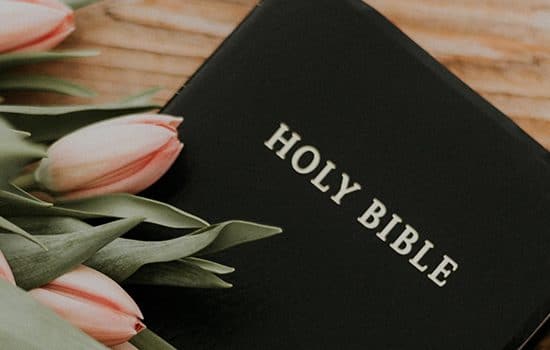 The Samaritan woman
The Samaritan woman
Formations: June 5, 2016
Scripture: John 4:4-26, 28-29, 39
 Michael OlmstedHave you noticed that most of Jesus’ conversations were with people on the fringes of society, people regarded as having little value or even as cursed by God?
Michael OlmstedHave you noticed that most of Jesus’ conversations were with people on the fringes of society, people regarded as having little value or even as cursed by God?
He did enter into theological discussions with scholars of the Law, but those were usually attempts by the rulers to discredit Jesus. Notable exceptions are his conversations with Nicodemus (John 3:1-21) and the rich young ruler (Matthew 19:16-22). This Samaritan encounter is particularly interesting because of all the moral and religious barriers Jesus crossed to share God’s grace.
The first signal that this story is very significant is John’s introduction: “Jesus had to go through Samaria” (John 4:4). The animosity between Jews and Samaritans was so great that Jews traveling from Galilee in the north to Judea in the south would circumvent Samaria to the west to avoid any contact, even though that route took twice as much time.
The hatred between Jews and Samaritans stretched all the way back to the fall of the northern kingdom in 720 BC. When the north was conquered, the people of any ability or worth were exiled and those left behind gradually married into other ethnic groups that were exiled from their homelands and resettled in what had been the northern kingdom.
Later (450 BC), when the Jewish exiles from Judah in the south were allowed to return home, the Samaritans offered to help rebuild the Temple. The Jews of Judah had carefully protected their ethnic/religious identity and summarily refused the help of “those half-breeds.” The Samaritans built their own temple on Mt. Gerizim and claimed they too were God’s people by their descent from Joseph through Ephraim and Manasseh.
The bitterness had grown stronger through the generations. No wonder the Samaritan woman was shocked when this Jewish man spoke to her and was willing to drink water she had drawn from Jacob’s well!
Jesus brushed aside another barrier when he, a Jewish teacher (rabbi) spoke to a woman in public. The strict rabbis would not greet a woman in public, even their own wife or daughter. Yet Jesus spoke to this Samaritan woman, this unclean creature, who also had what seemed a sordid lifestyle! Although there has been some speculation about the Samaritan woman’s lifestyle it is difficult to explain away “You’ve had five husbands, and the man you are with now isn’t your husband” (v. 18).
To any Jew this would have been an impossible situation, the breaking of racial, gender, moral and theological barriers. We are witnessing God’s promised Messiah loving and offering God’s forgiveness in his words and actions. I wonder what Jesus’ disciples were talking about as they walked to the nearby town to purchase lunch (v. 8)?
The woman was curious about this Jewish rabbi who was, first, sitting by Jacob’s well in Samaria, and, second, talking to a woman. Would he really drink from a bucket or ladle she filled with water? Jesus uses the situation to stir her interest with the words “living water,” and her uncertainty is replaced with curiosity. Obviously her life had been tragic, impacted by grief and spiritually unattached. We wonder why she had walked half a mile from the town in the heat of day to draw water. Was she avoiding the judgmental whispers of other women?
She may not be educated or a member of respected society, but her mind is clear and eager as she grabs hold of this idea that “living water” will not be dipped even from Jacob’s well (v.10-14). We can only wonder if she had ever truly known love, could imagine God as loving or could believe that she was worthy to be loved by God.
She is startled by Jesus’ insight into her life and momentarily moves to the centuries-old debate over which temple is really holy, Jerusalem or Mt. Gerizim? Jesus answers clearly that Jerusalem is the site of the true physical temple but quickly pushes that issue aside to tell her, “But the time is coming — and is here! — when true worshipers will worship (God) in spirit and truth. The Father looks for those who worship him this way. God is spirit, and it is necessary to worship God in spirit and truth” (v. 23-24).
She had never heard such words, which seemed even more startling coming from a Jewish rabbi at Jacob’s well in Samaria! She professes to know God’s Messiah is coming (v. 25) and then hears those incredible words from Jesus: “I Am — the one who speaks with you.” Remember God identified himself as “I am” when he appeared to Moses in the burning bush.
No need to elaborate on theories of inspiration, how the Spirit works or how much one must understand in order to be saved. The emptiness of the woman’s heart was filled with God’s love and she could not wait to tell everyone in her town that Messiah had come!
The phrase that began her testimony, “He told me everything I’ve ever done,” does not mean Jesus had a “fortune teller” kind of knowledge about her life details. She is joyfully saying that this Jesus understands the deepest longings and hurts of her life…he has offered her more than religious clichés…and he has opened to her the love, forgiveness and hope that transformed her life! The people hear her clearly and seek out Jesus.
When I read this unusual story, I learn again that faith must be much more than a doctrinal or religious attachment and that witnessing cannot be accomplished by reciting certain verses and asking someone to repeat “the sinner’s” prayer. Spiritual life (conversion) begins when a follower of Jesus cares enough to learn about and love a person in Christ, helping him/her to discover grace and believe.
We live in a world so lost and broken. Every day we are beaten down by ugliness and tragedy. We are the church, the followers of Jesus, the broken-hearted ones who have found the water of life. Now it is our turn to offer those around us the water of life that satisfies the deepest thirst of the human heart.
Retired after 45 years in pastoral ministry, Michael K. Olmsted enjoys family, supply preaching and interim work, literature, history, the arts and antiques.
Formations is a curriculum series from Smyth & Helwys Publishing, Inc. through NextSunday Resources.
The PDF download requires the free Acrobat Reader program. It can be downloaded and installed at https://get.adobe.com/reader.


